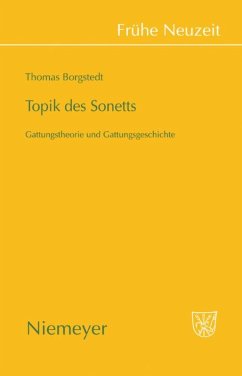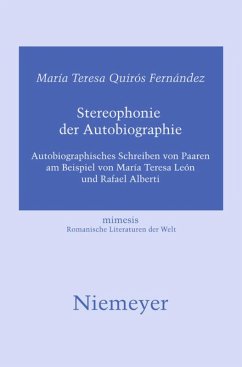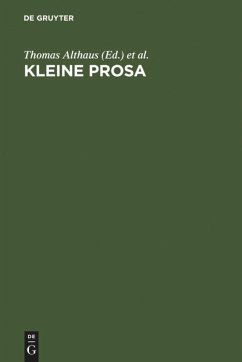The study combines a general theory of the history of literary genres with a history of the sonnet from the Middle Ages to the Romantic period. It demonstrates the adaptability of artistic genres, paying special attention to media and communication theoryand social and historico-cultural aspects. For the sonnet, it proposes models for its genesis in the Middle Ages and its various historical manifestations. This is a fundamental work on genre theory and the history of the German and European sonnet.
Die Arbeit entwirft ein Mehrebenenmodell kommunikativer Gattungen, das universalistische, soziale und historische Aspekte unterscheidet. Damit wird eine medientheoretische Ausweitung der Gattungstheorie und ein genuines Modell der Historizität literarisch-künstlerischer Gattungen vorgeschlagen. Exemplarisch durchgeführt wird dies am Beispiel der europäischen Geschichte des Sonetts von dessen mittelalterlicher ,Erfindung' am Hof Kaiser Friedrichs II. in Sizilien bis zum romantisch-modernen Sonettmodell August Wilhelm Schlegels. Die ,gattungstopische' Darstellung ermöglicht eine grundlegende Historisierung des Gattungsmodells: Neue Thesen zur Sonettentstehung, zu deren mediengeschichtlichen und numerologischen Voraussetzungen (mit Parallelen zur staufischen Herrschaftsarchitektur), und zur historischen Vielfalt der Gattungsentwicklung pluralisieren das überkommene Bild der Sonettform. Als historische Paradigmen werden die mittelalterliche, kombinatorisch angelegte Sonettstanze,das frühneuzeitliche epigrammatisch konturierte Sonett und das genuin moderne, an der Liedform und der formalen Tektonik orientierte, ,rationalisierte' Sonettmodell des 18. Jahrhunderts unterschieden. Ein eigenes Kapitel ist der petrarkistischen Tradition der deutschen Sonettistik der Barockzeit gewidmet.
Die Arbeit entwirft ein Mehrebenenmodell kommunikativer Gattungen, das universalistische, soziale und historische Aspekte unterscheidet. Damit wird eine medientheoretische Ausweitung der Gattungstheorie und ein genuines Modell der Historizität literarisch-künstlerischer Gattungen vorgeschlagen. Exemplarisch durchgeführt wird dies am Beispiel der europäischen Geschichte des Sonetts von dessen mittelalterlicher ,Erfindung' am Hof Kaiser Friedrichs II. in Sizilien bis zum romantisch-modernen Sonettmodell August Wilhelm Schlegels. Die ,gattungstopische' Darstellung ermöglicht eine grundlegende Historisierung des Gattungsmodells: Neue Thesen zur Sonettentstehung, zu deren mediengeschichtlichen und numerologischen Voraussetzungen (mit Parallelen zur staufischen Herrschaftsarchitektur), und zur historischen Vielfalt der Gattungsentwicklung pluralisieren das überkommene Bild der Sonettform. Als historische Paradigmen werden die mittelalterliche, kombinatorisch angelegte Sonettstanze,das frühneuzeitliche epigrammatisch konturierte Sonett und das genuin moderne, an der Liedform und der formalen Tektonik orientierte, ,rationalisierte' Sonettmodell des 18. Jahrhunderts unterschieden. Ein eigenes Kapitel ist der petrarkistischen Tradition der deutschen Sonettistik der Barockzeit gewidmet.








